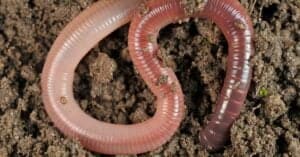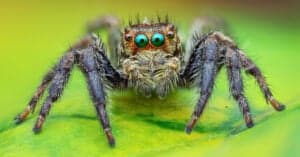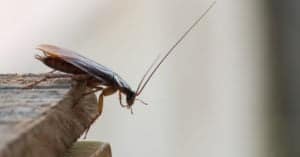Oyster vs Clam: 7 Main Differences Explained
Oysters and clams are two very popular edible mollusks or bivalves. Although they have many similarities between them, there are enough differences so that the average diner can tell which is which. Also, not everyone enjoys both, they are used in some unique recipes, and they are eaten differently. Read on to learn more about their taste, size, shape, color, which one produces pearls, and other facts used for even easier identification of each.
Comparing Clam vs. Oyster
| Clam | Oyster | |
|---|---|---|
| Taxonomy | Family Veneridae | Family Ostreidae |
| Types | Hard & soft shells | True & pearl |
| Size | 0.4 to 3 inches depending on species | 1.5 to 7 inches depending on species |
| Habitat | Saltwater & freshwater; Atlantic & Pacific oceans; ocean floor | Saltwater more than freshwater; east and west coasts; rocks & other oysters |
| Lifespan | 1 to 30 years depending on species except for ocean quahog 500 | 5 to 30 years |
| Body | Smooth shells; pale white to tan meat | Rough, bumpy shells with wavy lines; pale white to tan meat |
| Produces pearls? | No | Yes; genus Pinctada, family Pteriidae |
| Taste/texture | Pungent, briny, & chewy | Buttery, smooth, tender, can be slurped down |
| Nutrients | Vitamin C, manganese, selenium & iron | Zinc, potassium, & phosphorus |
| Cooking | Often cooked in chowders, stews, soups, stir-fries, steamed dishes | Raw, baked, fried, or grilled; often eaten solo |
The 7 Key Differences Between Clam and Oyster
- Taxonomy: Both clams and oysters are members of the phylum Mollusca, order Bivalvia. However, that’s where their similarities end and their differences begin. Clams are members of the family Veneridae and oysters, Ostreidae.
- Types: Both clams and oysters generally have two types, aside from edible and non-edible species. Whereas clams are divided into hard shell and soft shell, oysters are divided into true and pearl species.
- Habitat: There is some overlap in the locations of clams and oysters. Both can live in saltwater or freshwater. However, oysters are more commonly found in saltwater. Another one of their differences is in how they live. Clams live buried in the ocean floor and oysters live attached to rocks or other oysters.
- Body: There is some overlap in the size of clams and oysters from the smallest to the largest species. Both have pale white to tan meat. Also, they can have different colors and even different shapes, such as razor clams. It’s the texture of the shells that make for the easiest identification between them. Clam shells are exfoliated by the sand they bury themselves in, so they are smooth. Oyster shells are rough and bumpy with wavy lines.
- Taste/texture: Similarities in taste between clams and oysters are greatest if they are both saltwater or freshwater species. Hence, it’s the texture where the biggest differences lie and make for easy identification. Clams are chewy, but oysters are tender and can be slurped down.
- Nutrients: Both clams and oysters are low in calories and fat and excellent sources of protein, vitamin B12, zinc, potassium, calcium, and phosphorus. But whereas clams are rich in vitamin C, manganese, selenium and iron, oysters are rich in zinc, potassium, and phosphorus. These differences also account for their taste.
- Cooking: Oysters and clams can be cooked in many different ways or eaten raw. It’s how they are eaten that most distinguishes them. Although people can eat both oysters and clams raw, it’s far more common to eat oysters raw. Also, while raw oysters can be eaten with or without cocktail sauce, the sauce is necessary for eating raw clams. It’s also far more common to have clams in meals with other ingredients, such as clam chowder, or even with other seafood, such as paella. Oysters are often eat by themselves and as a luxury dish or appetizer, such as oyster shots.
Next Up: Discover The Largest Bobcats Ever
FAQs (Frequently Asked Questions)
Are oysters and clams the same?
No. These bivalves or mollusks have similarities in that they are both in the phylum Mollusca, class Bivalvia, but the facts about each show differences in further classification, location, shells, and other features.
What tastes better: oyster or clams?
There are some similarities in taste, but there are enough differences so that they aren’t always cooked the same way nor do they have the same recipes. Clams are more commonly eaten in everyday meals while oysters are considered a luxury. Many people enjoy both.
How do you tell the difference between clams and oysters?
The facts any observer can collect about them regarding their taste, shape, color, and shells will easily distinguish between them. Location and size don’t matter as much because there is an overlap in their habitats and size, depending on the species.
Does a clam or oyster make a pearl?
Oysters create pearls. All can do so but they’re not all commercially useful, which only pearl oysters do. Pearl oysters are not true oysters.
Can you eat raw clams like oysters?
Yes, you can eat clams raw like oysters. However, people prefer to eat raw oysters over raw clams. Also, while people can eat raw oysters with or without cocktail sauce, it is necessary to eat raw clams on the half-shell with cocktail sauce.
Do oysters come from clams?
No. Oysters and clams have similarities through the class Bivalvia, and after that is where their differences begin.
More from A-Z Animals
Oysters and clams are two very popular edible mollusks or bivalves. Although they have many similarities between them, there are enough differences so that the average diner can tell which is which. Also, not everyone enjoys both, they are used in some unique recipes, and they are eaten differently. Read on to learn more about their taste, size, shape, color, which one produces pearls, and other facts used for even easier identification of each.
Comparing Clam vs. Oyster
| Clam | Oyster | |
|---|---|---|
| Taxonomy | Family Veneridae | Family Ostreidae |
| Types | Hard & soft shells | True & pearl |
| Size | 0.4 to 3 inches depending on species | 1.5 to 7 inches depending on species |
| Habitat | Saltwater & freshwater; Atlantic & Pacific oceans; ocean floor | Saltwater more than freshwater; east and west coasts; rocks & other oysters |
| Lifespan | 1 to 30 years depending on species except for ocean quahog 500 | 5 to 30 years |
| Body | Smooth shells; pale white to tan meat | Rough, bumpy shells with wavy lines; pale white to tan meat |
| Produces pearls? | No | Yes; genus Pinctada, family Pteriidae |
| Taste/texture | Pungent, briny, & chewy | Buttery, smooth, tender, can be slurped down |
| Nutrients | Vitamin C, manganese, selenium & iron | Zinc, potassium, & phosphorus |
| Cooking | Often cooked in chowders, stews, soups, stir-fries, steamed dishes | Raw, baked, fried, or grilled; often eaten solo |
The 7 Key Differences Between Clam and Oyster
- Taxonomy: Both clams and oysters are members of the phylum Mollusca, order Bivalvia. However, that’s where their similarities end and their differences begin. Clams are members of the family Veneridae and oysters, Ostreidae.
- Types: Both clams and oysters generally have two types, aside from edible and non-edible species. Whereas clams are divided into hard shell and soft shell, oysters are divided into true and pearl species.
- Habitat: There is some overlap in the locations of clams and oysters. Both can live in saltwater or freshwater. However, oysters are more commonly found in saltwater. Another one of their differences is in how they live. Clams live buried in the ocean floor and oysters live attached to rocks or other oysters.
- Body: There is some overlap in the size of clams and oysters from the smallest to the largest species. Both have pale white to tan meat. Also, they can have different colors and even different shapes, such as razor clams. It’s the texture of the shells that make for the easiest identification between them. Clam shells are exfoliated by the sand they bury themselves in, so they are smooth. Oyster shells are rough and bumpy with wavy lines.
- Taste/texture: Similarities in taste between clams and oysters are greatest if they are both saltwater or freshwater species. Hence, it’s the texture where the biggest differences lie and make for easy identification. Clams are chewy, but oysters are tender and can be slurped down.
- Nutrients: Both clams and oysters are low in calories and fat and excellent sources of protein, vitamin B12, zinc, potassium, calcium, and phosphorus. But whereas clams are rich in vitamin C, manganese, selenium and iron, oysters are rich in zinc, potassium, and phosphorus. These differences also account for their taste.
- Cooking: Oysters and clams can be cooked in many different ways or eaten raw. It’s how they are eaten that most distinguishes them. Although people can eat both oysters and clams raw, it’s far more common to eat oysters raw. Also, while raw oysters can be eaten with or without cocktail sauce, the sauce is necessary for eating raw clams. It’s also far more common to have clams in meals with other ingredients, such as clam chowder, or even with other seafood, such as paella. Oysters are often eat by themselves and as a luxury dish or appetizer, such as oyster shots.
Next Up: Discover The Largest Bobcats Ever






